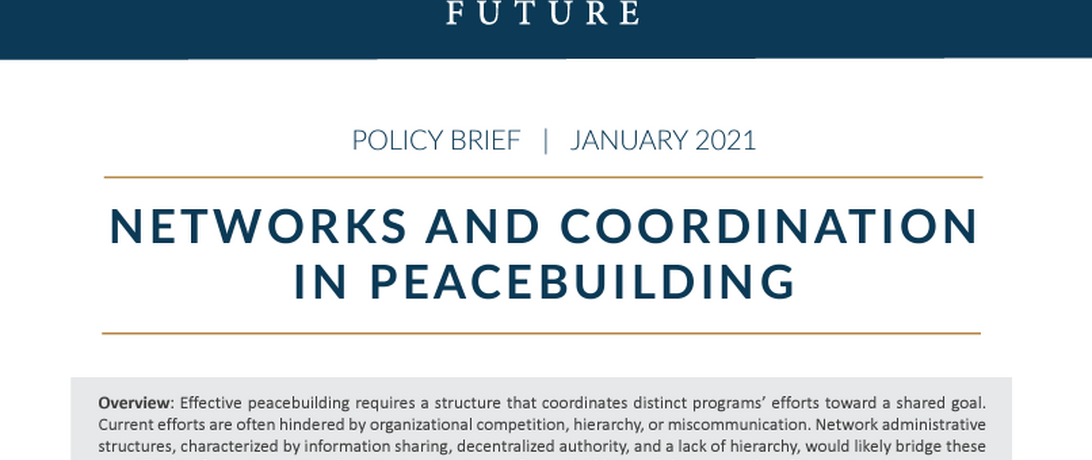
This brief is an introduction to the use of network structures for organizing peacebuilding groups.
Key Findings
- Networks are a way of setting up collaborative structures. They don’t have a hierarchy or formal strategy, but instead are based on information sharing and helping individual participating groups or people make the best decisions they can.
- This approach may address some common problems in peacebuilding. Peacebuilding coordination efforts have been hampered in the past by problems of coordination arising from attempts to have a formal coordinated strategy. Network structures might get around this.
- When designing networks, organizers should consider questions of how to support self-interested reasons for participants to join and contribute, how to promote information-sharing within the network, and how to establish “backbone support” roles to keep the network moving.